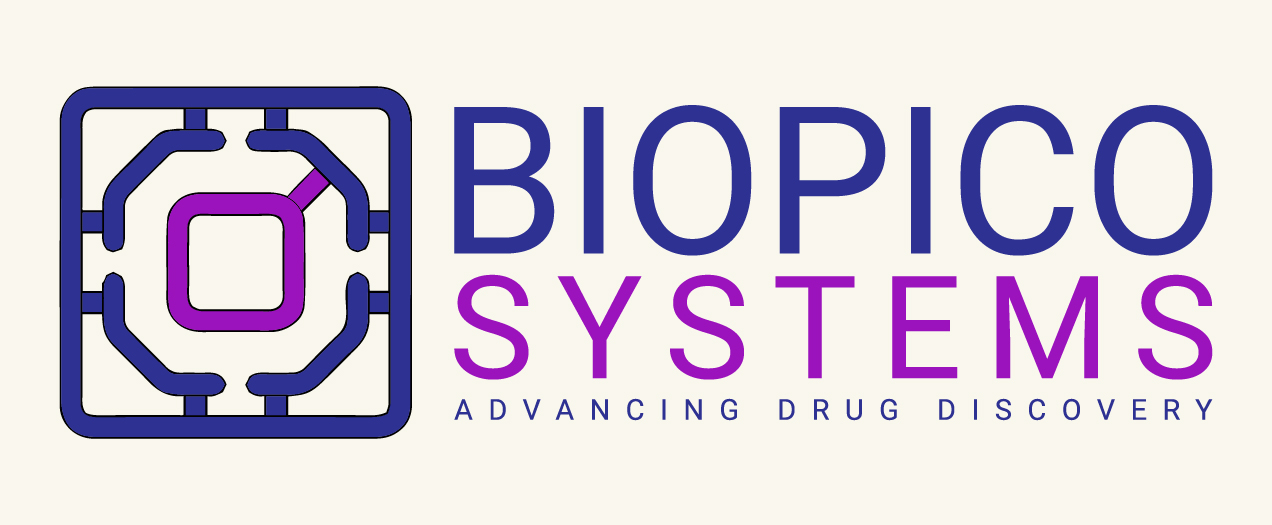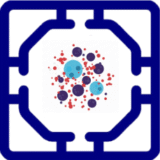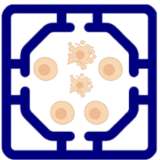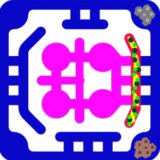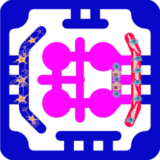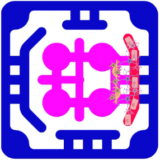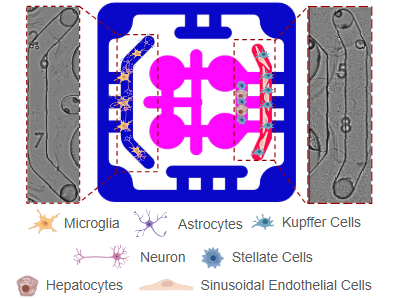
The organ system is designed with a 2 mL media capacity per unit, providing a stable and controlled environment for co-culture of liver and brain models. The two organ compartments are connected through recirculation loops, where unidirectional flow is maintained using programmable shear rates. Sampling ports and optical access wells allow non-invasive collection of media, direct tissue interrogation. At the end of culture, tissues can be harvested by dissolving the extracellular gel, enabling downstream analyses such as RT-qPCR, Western blotting, and advanced cell imaging. The transparent plate format supports live-cell imaging, functional assays, and integrated readouts during experiments
Within each compartment, a 3D extracellular matrix (ECM) supports the assembly of multiple human cell types. The brain compartment can incorporate iPSC-derived neurons, astrocytes, and microglia seeded at physiologically relevant ratios, while the liver compartment accommodates hepatocytes, Kupffer cells, stellate cells, and sinusoidal endothelial cells, organized either as spheroids or within hydrogel scaffolds. Together, these compartments provide a physiologically relevant platform to study neuronal and hepatic function, drug metabolism, and inter-organ cross-talk.
A common culture medium is optimized to sustain both tissue types. To streamline formulation, complex growth factor supplements (e.g., insulin, transferrin, selenium) are collapsed into a combined ITS+ variable tested at multiple levels. Additional modifiers such as albumin or nicotinamide are systematically screened to refine media performance. This strategy reduces optimization complexity while maintaining biological fidelity across organ systems. Functional monitoring includes cell viability, metabolic activity, oxidative stress, and cholinesterase activity over extended culture periods.
The modular design of the system enables experiments with single-organ models or integrated liver–brain systems, making a versatile platform for disease modeling, drug testing, and toxicity evaluation. For example, neurotoxicity can be assessed first in brain models alone, then expanded to coupled liver–brain platforms to evaluate the impact of hepatic metabolism on neuronal health.

